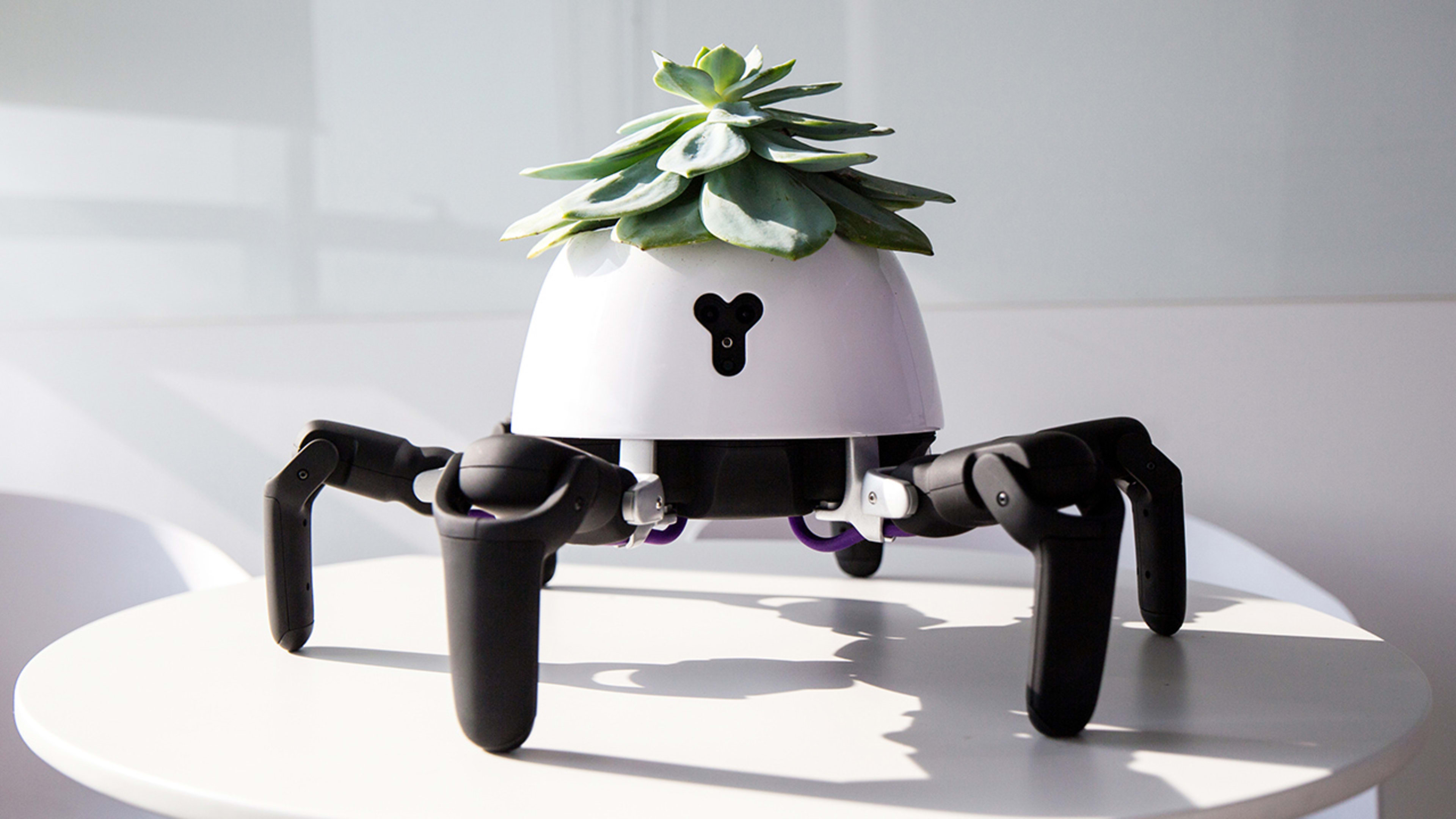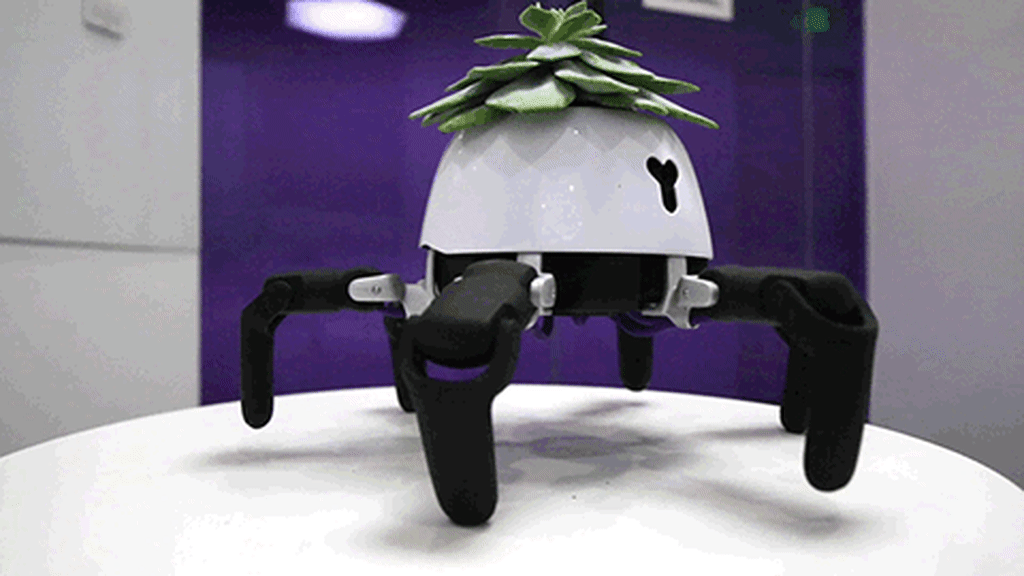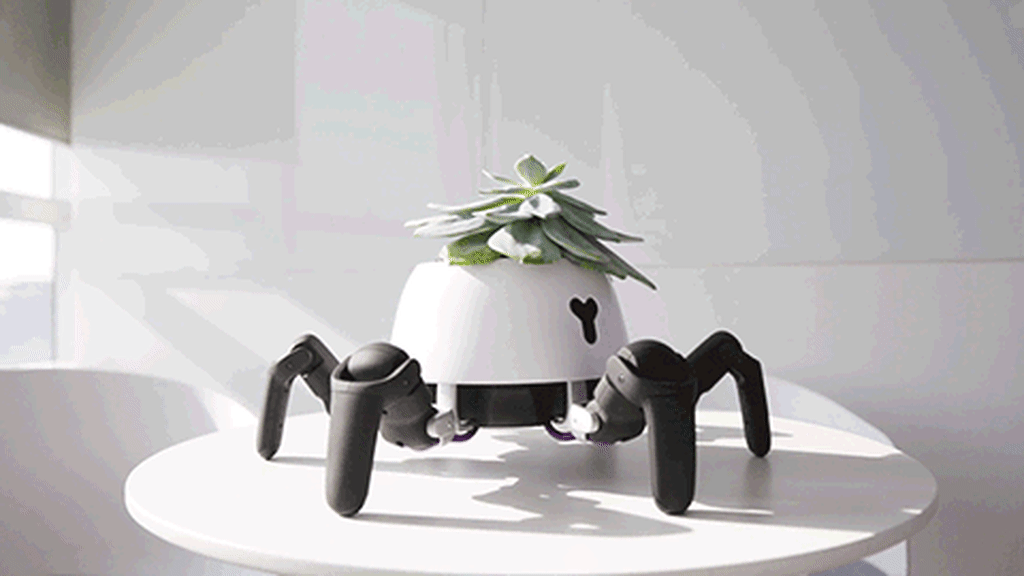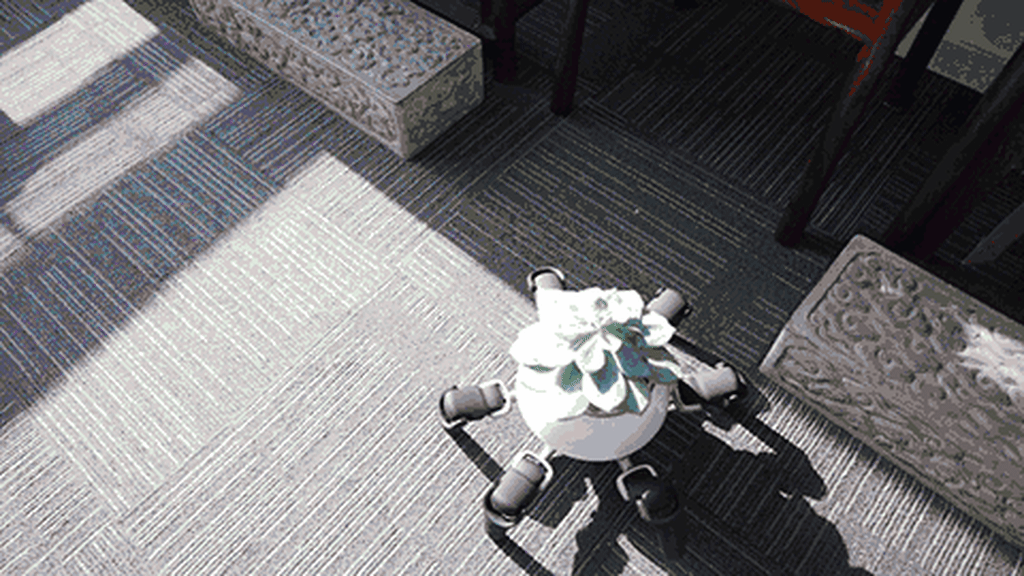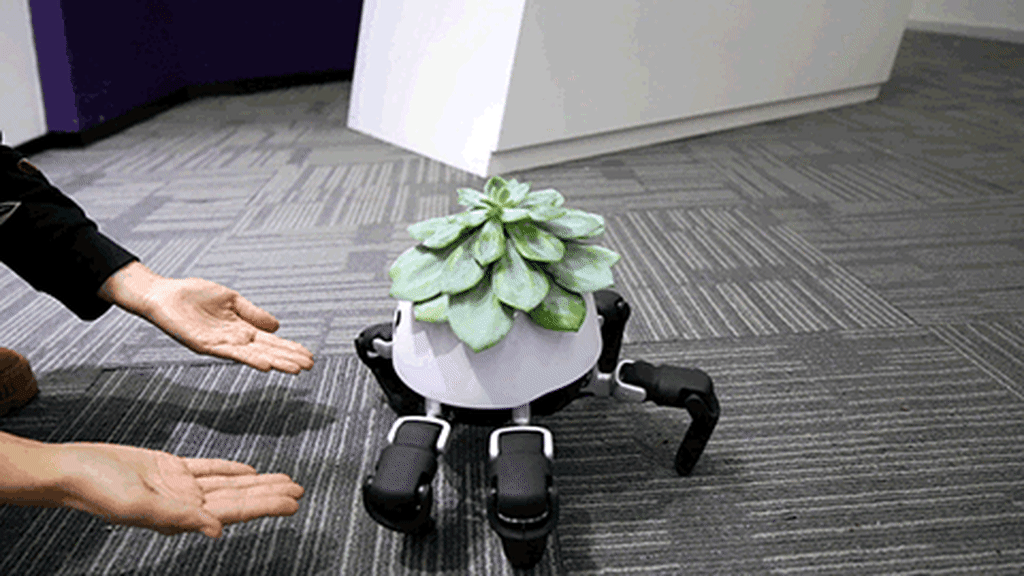In 2014, the roboticist Sun Tianqi saw a dead sunflower. It had been planted in the shade, where it was unable to sustain itself. He asked himself: What if that sunflower could move with the intent of a human? Could the sunflower have saved its own life?
[Image: Tianqi Sun]
So he created an art project, Sharing Human Technology with Plants, in which he placed a plant onto a six-legged robot that walked toward patches of light. That six-legged robot became the basis for the homebrew robot company Vincross. Now, with the Hexa platform in place, Tianqi, as CEO, has rebuilt his plant robot and made the plans available for anyone to duplicate. It behaves something like a Sony Aibo with a green patch of hair on top.
[Image: Tianqi Sun]
Using a suite of sensors, including infrared, the robot still makes its way to patches of light. But it’s a very loving, legged pot. It will slowly rotate the plant to make sure all of its leaves are getting sun, and it will back out of the light when the plant needs to cool down. The robot even goes so far as to use personality to mime the plant’s needs. The robot will dance when it’s happy (well-watered and lit), but actually stomp with the grumps if it’s thirsty. In this sense, the Hexa doesn’t just give its plant legs, it gives it a voice, too.
Of course, it takes a lot more energy to move this plant around than it actually gets from the sun. The robot recharges itself much like a Roomba, sucking down electricity as needed from the grid to stay in motion. But perhaps the reason that Tianqi’s project is so affecting is specifically that it’s so impractical, and so irrational. It’s a robot that’s doing whatever is necessary to take care of a living organism simply because it sees that life as more important than its own. It’s a metaphor for AI in the current age–and our most optimistic vision for where technology evolves over the next few decades, when that AI becomes smarter than us.
Recognize your brand’s excellence by applying to this year’s Brands That Matter Awards before the early-rate deadline, May 3.
